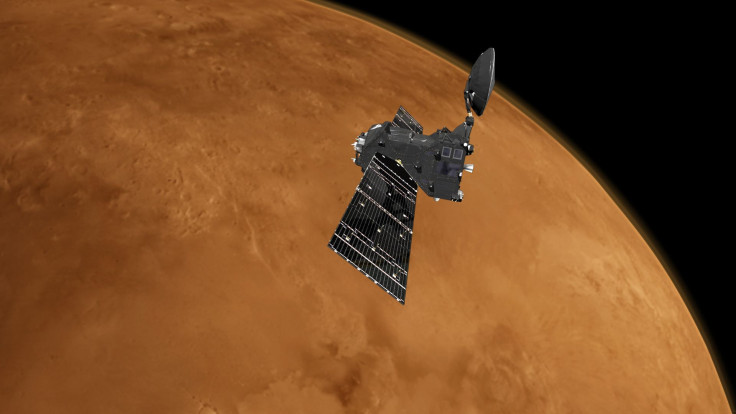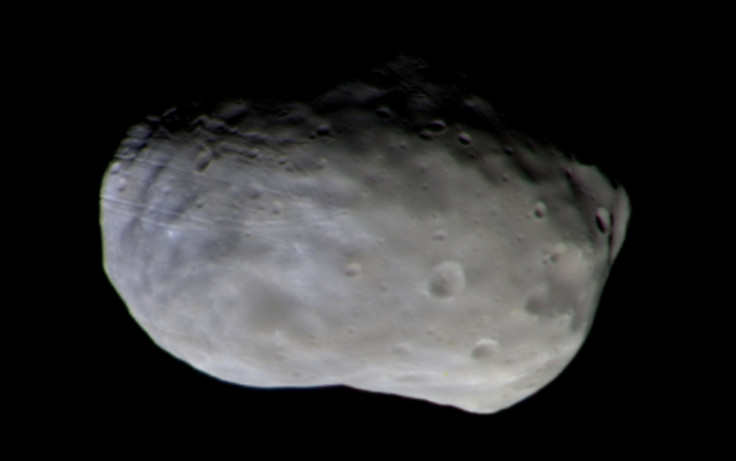ExoMars Mission Update: Trace Gas Orbiter Carries Out Test Science Measurements

Less than two months after inserting itself in orbit around Mars, the ExoMars Trace Gas Orbiter (TGO) has begun flexing its science muscles. On Tuesday, the European Space Agency (ESA) released a composite image of the tiny Martian moon Phobos compiled using several photographs captured by the camera on board the TGO from a distance of roughly 4,800 miles.
“Although higher-resolution images of Phobos have been returned by other missions, such as ESA’s Mars Express and NASA’s Mars Reconnaissance Orbiter, this provided a good test of what can be done with our data in a very short time,” Nick Thomas, principal investigator of the Colour and Stereo Surface Imaging System (CaSSIS) camera team at the University of Bern, Switzerland, said in a statement. “The images have given us a lot of useful information about the colour calibration of the camera and its internal timing.”

The images were taken during the TGO’s second science orbit, which took place on Nov. 26. Two other instruments on board the TGO also made calibration measurements of Phobos, and researchers at the ESA are now poring over the data.
The TGO is currently locked in a 4.2-daylong elliptical orbit around the red planet, that, at its closest approach, brings it within 200 miles above Mars’ surface. In its previous science orbit, completed on Nov. 22, the orbiter tested its suite of instruments for the first time by making preliminary observations of carbon dioxide in the planet’s atmosphere and by measuring fluctuations in neutron flux above its surface.

“We’re very happy with the results of both test science orbits and will be using these calibration data to improve our measurements once we begin the main science mission later next year,” Håkan Svedhem, ESA’s TGO project scientist, said in the statement.
The ExoMars spacecraft, launched in March, originally consisted of two parts — the TGO, and the Schiaparelli Entry, Descent and Landing demonstrator module. In October, after a seven-month journey, the TGO successfully inserted itself into an orbit around the Mars, but the lander, which was supposed to make a soft landing on the surface, failed to beam back signals that would have shown that it had done so successfully.
The main objective of the ExoMars mission is to search for evidence of methane — a gas emitted by living microbes on Earth, and traces of which have been observed by previous Mars missions — and other trace atmospheric gases that could be signatures of active biological or geological processes.
© Copyright IBTimes 2024. All rights reserved.






















